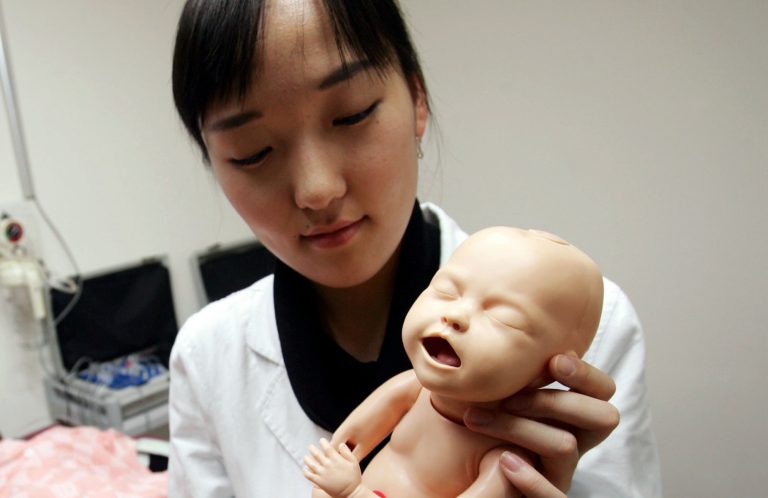The average number of children born per woman in the Republic of Korea (ROK) sank to a new low in the third quarter of 2023 — just 0.70, or less than half of the 2.1 needed to maintain a population at a stable level.
South Korea’s total fertility rate, as the number is called, was 0.78 children per woman in 2022 — the lowest of any country worldwide. The U.S. TFR was 1.66 in 2022.
The latest drop was announced by Statistics Korea, a government organization, in late November.
Yonhap News Agency reported that “the number of babies born in South Korea fell 11.5 percent on-year to 56,794 in the third quarter of 2023, the lowest for any third-quarter figures since 1981,” as a Nov. 29 article reads.
- South Korea Scraps Its Traditional Reckoning of Age, Making All Citizens Younger by 1 Year
- North Korea Runs Anti-Divorce Campaign in Effort to Maintain Birthrate
Fertility rates in East Asian countries tend to be much lower than other parts of the world, with countries such as China, Japan, and Taiwan lagging behind similar industrialized nations in Europe and North America. However, the ROK’s TFR is significantly worse than its neighbors, including notably antagonistic North Korea, which claimed an average of 1.79 children per woman per the latest count.
Success
You are now signed up for our newsletter
Success
Check your email to complete sign up
Sociologists cite a variety of reasons for the dip in fertility rates, from the extremely high-pressure work environments in the ROK to changing lifestyle expectations among young people and gender equality leading to more women spending their reproductive years in higher education and work rather than becoming mothers. In 1970, South Korean women were having an average of four children each, a figure that had dropped to just 1.4 by the year 2000.
Meanwhile, according to Statista the median age of first marriage has been steadily rising. In 2000, the age for men was 29 while it was 26 for women; by 2022, the median for men rose to 33, while the median woman will only marry at 31 — that is, after her physical ability to have children has likely started to decline.
MORE ON DECLINING FERTILITY AND ANTI-NATALISM WORLDWIDE
- Plummeting Birth Rates in the US Leave Experts Mystified
- ‘Critical situation’: Japanese Births Continued to Decline in 2022
- Chinese Woman Accuses Executive of Pressuring Her Into Abortions, Leaves ‘Final Will’
- COVID-19 Worsened China’s Declining Birth Rate, Health Commission Says
- Abortion the Leading Cause of Death in 2021; Over 42 Million Babies Terminated
















